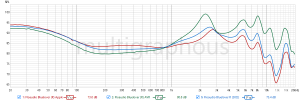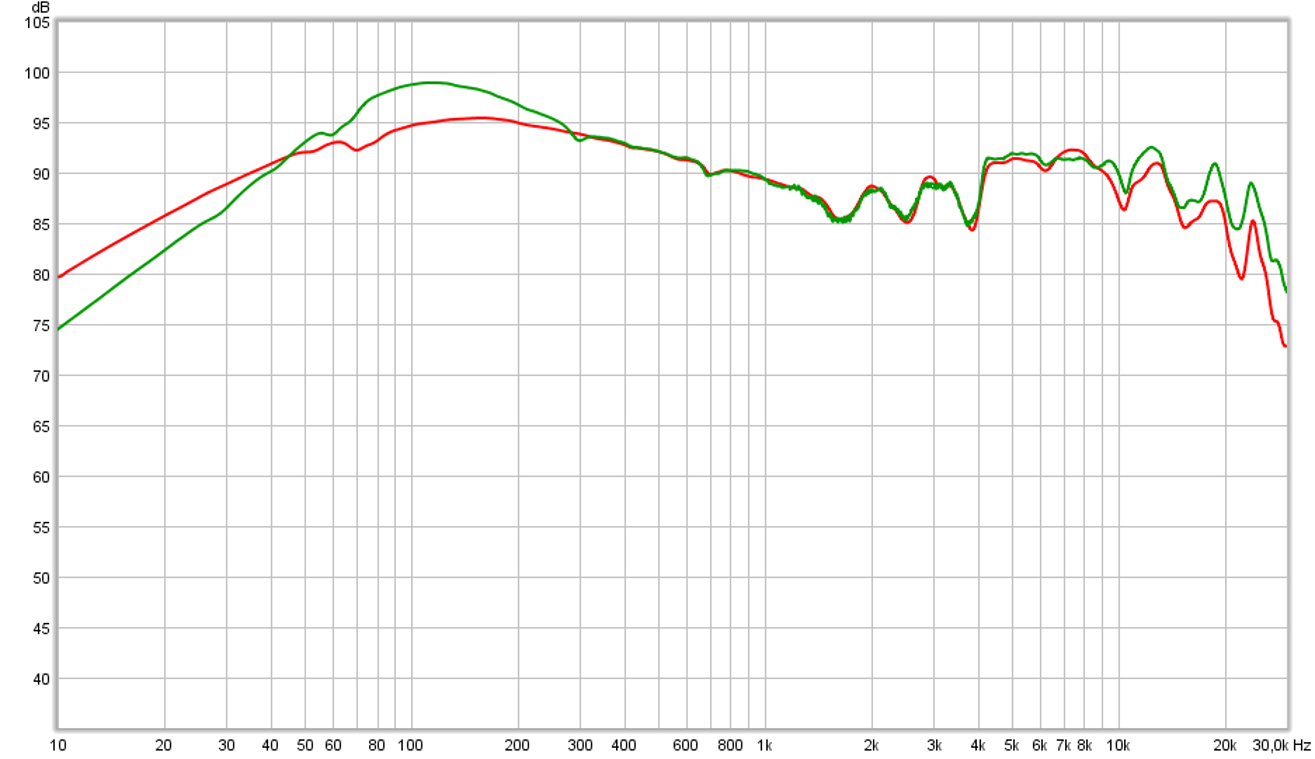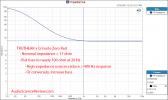Adding just a fraction of an ohm in-line with my speakers changes their voicing noticeably. Not so much the bass, but treble - it screws up the crossover. I have to get up to half an ohm or so before the bass starts sounding obviously bloated.
Headphones, though... On a few occasions I've used the RCA outs from a DAC with a 20 ohm output impedance to drive my 250 ohm headphones. I never noticed anything wrong with how they sounded, and with a damping factor of over 12, most things should sound just fine. Then a situation arose where my 250 ohm'ers weren't around, so I had to use my 37 ohm cans... I was expecting a horrible experience, but no - it worked fine! Better than fine, actually...
So then I got curious and plugged my 37 ohm 1440s into a 50 ohm output...
Everything still sounds perfectly fine! Exactly as if it was driven by something less than 0.1 ohm!
Is there something about the way that DAC outputs operate? Do they somehow take the headphones into account with their negative feedback or something? Or does frequency generally not really affect headphones' impedance to the degree of speakers?
Has anyone else driven their headphones from 20 to 50, even 100 ohms? What was your experience?
edit: afterthought: are DAC output stages in any danger of being pushed into over current? What about the resistor? Is it just there for short term protection (like plug/unplug) and not really drop any voltage because most amps are 4,000-50,000 ohm, or do they size the resistor so that there's no danger to the output unless you put a voltage source there...
Headphones, though... On a few occasions I've used the RCA outs from a DAC with a 20 ohm output impedance to drive my 250 ohm headphones. I never noticed anything wrong with how they sounded, and with a damping factor of over 12, most things should sound just fine. Then a situation arose where my 250 ohm'ers weren't around, so I had to use my 37 ohm cans... I was expecting a horrible experience, but no - it worked fine! Better than fine, actually...
So then I got curious and plugged my 37 ohm 1440s into a 50 ohm output...
Everything still sounds perfectly fine! Exactly as if it was driven by something less than 0.1 ohm!
Is there something about the way that DAC outputs operate? Do they somehow take the headphones into account with their negative feedback or something? Or does frequency generally not really affect headphones' impedance to the degree of speakers?
Has anyone else driven their headphones from 20 to 50, even 100 ohms? What was your experience?
edit: afterthought: are DAC output stages in any danger of being pushed into over current? What about the resistor? Is it just there for short term protection (like plug/unplug) and not really drop any voltage because most amps are 4,000-50,000 ohm, or do they size the resistor so that there's no danger to the output unless you put a voltage source there...




